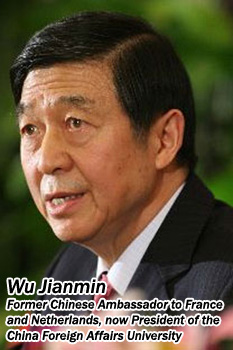
By Wu Jianmin
I met a lot of Latin American friends in China and abroad in 2007, and they were very interested about what is happening in China. They were curious to know how China can maintain the blistering economic growth rate – averaging 9 percent in the past 29 years. Some western economists have forecast that China is going to experience recessions, but this has not happened. I told my friends that China's rapid growth could be attributed to building socialism with Chinese characteristics. The theory was reviewed at the 17th National Congress of the Chinese Communist Party. The western economists'predictions have failed because they lack a true understanding of China's economy.
This is the first time during my career that Latin America has gotten super interested in China and I'm sure it's no accident.
Many Latin American countries have benefited from China's rapid growth. Those cooperating closely with China have also enjoyed rapid economic development, thus pushing up their own economies. The trade between the two sides grew unexpectedly during the 21st century. In 2001 trade volume was only US$15 billion but the number reached almost US$100 billion in 2007. China has become Latin America's third largest trading partner. The two sides have mutually complementary economies; this is the driving force of the rapidly growing trade ties between them.
But trade frictions and problems exist between China and their Latin American trade partners. Some Latin Americans are worried that their domestic products are not as competitive as those made in China. But in fact, these frictions can be solved through negotiations based upon equality and mutual benefit. "China will consider the interests of others, especially developing countries, while seeking its own development,"Chinese President Hu Jintao stated in his report to the 17th National Congress of the Chinese Communist Party in October 2007, affirming that the Chinese government has attached great attention to developing countries.
In the past China and the Latin American countries supported each other's struggles for national independence and liberation. Both sides hold the same views on building a fair, democratic and harmonious world based on multilateralism.
In addition the Chinese people are interested in Latin American culture, which they find enthusiastic and vigorous. Latin Americans also love China's long, rich culture. The two continents can learn from each other via cultural exchanges.
China and Latin America have close economic ties, mutual trust in politics and they also learn from each other's culture, thus providing a solid foundation for further partnership.
(China.org.cn, February 26, 2008)